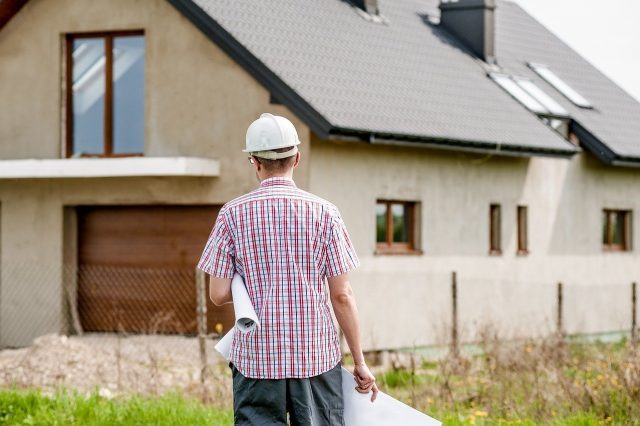
Planning for a property development project is never straightforward, since it takes many hours of research and homework to try and understand the UK planning permission system and to consider all factors. With planning proposals, problems occur all the time due to an oversight or lack of time, with only 64% of non-major decisions being made by local authorities during the statutory deadline of 8 weeks. Here are the problems to try and avoid when putting together your planning proposal so that you can have your answer within the deadline and avoid further delays to your project.
Underestimating the Length of Time
In the UK, planning authorities have a specific timeframe to deal with a planning permission proposal, which is 8 weeks for non-major developments in England and Wales, such as alterations to homes and developments of up to nine flats or houses. In Northern Ireland, that deadline is slightly longer at fifteen weeks for local developments and in Scotland the deadline for this is set at two months. Deadlines are rarely met due to additional work needing to be carried out, such as an Environmental Impact Assessment. Use biodiversitynetgainplan.co.uk to get ahead and action an ecological assessment to avoid delays in your proposal. You’ll receive a 10% biodiversity net gain plan to show authorities how you intend to protect biodiversity on your proposed development site.
Furthermore, your deadline may also get extended after a written agreement from the person applying, which is fairly common, especially when your situation or plan is more complex, and this can affect your schedule. Therefore, don’t underestimate the length of time this planning proposal process might take, or assume that your project will be determined within the eight-week deadline. Instead, ensure that you factor in plenty of additional time for unexpected delays. In order to reduce delays or at least minimise their impact, you should first try and get your application right before submitting, potentially by having it looked over by your local planning department or paying for pre-application advice. Next, you could discover what the average timeframes are for your council by looking at performance figures because they can usually give you a rough idea of what to expect for your area. However, every case is different, so don’t be tied to these.
Changed Plans After Work Started
In a survey of homeowners and analysis of government statistics on problems affecting planning permission, around 23% of those surveyed showed that permission had been delayed due to a change in plans after work started. Sometimes changes need to be made and that is okay; however, these can cause you serious delays, especially once work has already gotten started on your original plan. It is best to have all the groundwork sorted and checked over by a professional trader before you submit your application so that you can get it right the first time.
You may also want to contact architects, as well as your planning department who can help to decipher any pitfalls in your plan before it is submitted and changes become inevitable. Nevertheless, even when you have made every effort to get your plan perfect, you may still need to change plans from the original arrangement. Some changes can be quite simple, but some may require an extension on your deadline, so ensure that you contact the council as soon as possible to notify them of the problem.
Underestimating Costs
Many people who have been through the planning permission process have explained that you should consider doubling the cost of what you think your project might be, after calculating the total figure since unforeseen fees can arise throughout the process. The cost of planning permission will depend on the complexity and size of your project so firstly, make sure you understand that every case is different, and it may not cost you what it has cost another fellow developer.
If your plan is fairly small, you might benefit from permitted development rights, where you are able to extend up to 50% of the land around the outside of your original house without needing to submit a full planning application. For this, you’ll also need to check that your extension does not exceed the top of your property’s roof or extend past four metres. It also may not extend beyond the rear of the house more than four metres, unless you use the larger homes extension scheme.
If you are planning a much larger project either for a commercial property or larger home, you will need to apply for the full planning permission and be aware of all the potential costs that could incur. For fewer surprises, allow yourself a contingency fund once you have calculated the basic cost for extras such as bat surveys. You should also know the correct permission you should apply for and understand the right fee for this. The best idea for understanding what costs to expect is to have someone experienced such as your local authority work through potential fees with you or, alternatively, use an online tool for the least hassle.
Anything Else
There are many other ways in which a planning application can go wrong or become even more delayed. The next top three reasons being: failing to apply when needed, submitting inaccurate plans, and applying for the wrong type of permission. Each of these problems will have been caused due to an oversight in the planning process, whereby something has been skimmed over too quickly or simply not even considered. It is important for people to really take time to research and discover everything that needs to be included in a planning application and, if necessary, double the predicted time required for ensuring no oversight has been made.
Other common issues that planning applicants have dealt with include: having plans rejected due to errors, difficulty getting permission for listed buildings or homes in conservation areas, and understanding objections from neighbours. You might be surprised by objections that the community in your area have for a development project, with some applications being delayed years until the disagreement is settled and a compromise is made. Furthermore, listed buildings are notoriously difficult to get planning permission for since any works to alter, extend or demolish the building that affect its character as a building of special interest require listed building consent. This covers the external and internal of the building, therefore, any works that affect both, such as replacing windows, are covered. This extra consent should be factored into the time schedule of an application process since it can take much longer, with some examples taking up to four years to get approval.
These are the most common problems that can occur and shouldn’t be ignored if you want to expect a smooth application process. Nevertheless, most problems can be avoided by simply conducting thorough research and calling in the help of experts and professional contractors. You might also be thankful to know that 80% of the surveyed homeowners did not experience any problems at all, suggesting that, generally, people are conducting the necessary research required before beginning an application process. Save yourself extra time and money by being in the top 80% rather than going into an application process unprepared and dealing with unwanted hassle and stress.













